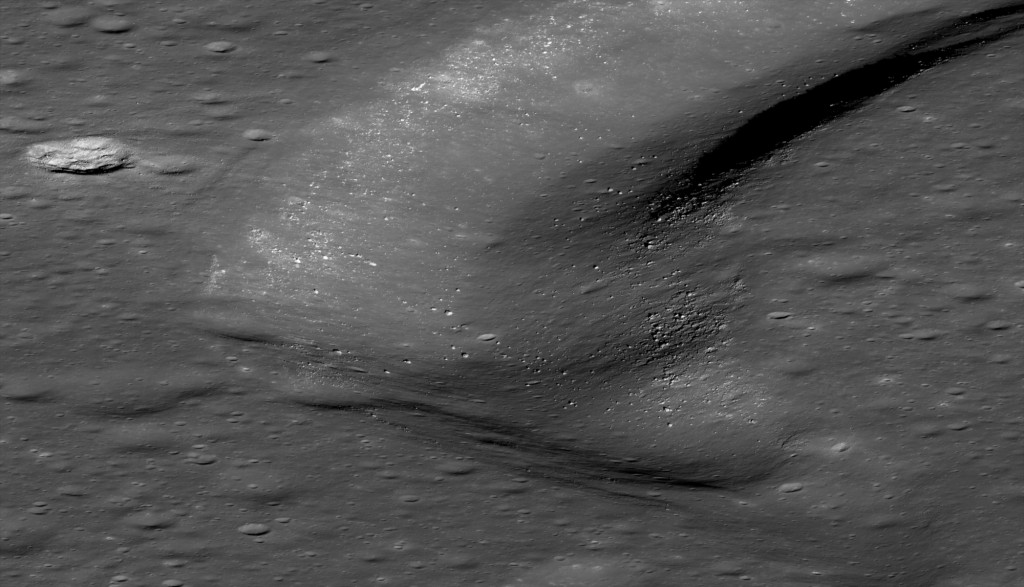One of the regions we’re looking at with Moon Mappers is the Apollo 15 landing site area. It’s a neat place and we can study a lot of things there. Due to a quirk of optics and angles, you can even imagine you’re flying towards it.
When the Narrow Angle Camera (NAC) peers down from the Lunar Reconnaissance Orbiter (LRO) at the moon, normally the camera is aimed straight-down (or very close to it). We call that a slew angle of 0°. While things don’t necessarily look flat when you do this, they don’t give you much perspective.
Sometimes, other instruments need to look straight down, and so LRO rotates. But the camera team still wants to take pictures, and so they do, just at an angle. This would be a slew of not 0°. If you have a slew greater than around 60° some interesting things happen (where 90° would be looking straight across — imagine looking at the edge of a piece of paper instead of straight down).
Imagine flying in an airplane. If you look down out your window and you’re not over the wing, then you’ll see the landscape rolling by. But if you look further up, towards the horizon, you’ll get more of a perspective view and things will look more 3D, as though they pop out at you.
This was done recently near the Apollo 15 site, where the slew angle was about 58°. The two NAC images are M165842369LE and M165842369RE. Below is a 2000-pixel-wide (around 3% full size) version of the photos (click to be taken to the “full” 2000-pixel-wide version from the thumbnail):
The image is looking due East (which is up in this image) with the sun coming off the right side of the image, towards the south. The arrow is pointing due North.
What you see snaking through the image is called Hadley Rille, an ancient volcanic feature. In the upper right, you’re looking at the Hadley Mons, where “mons” means “mountains.” And the arrow, while it points north, also points right at the Apollo 15 lander.
Let’s look at that in a bit more detail …
Nothing has been changed scale-wise, that arrow tip is the same size arrow as in the full images above. We just zoomed in to full resolution and cropped it off. That dark spot that spans around 15 pixels across is the Apollo 15 lunar module called the Falcon.
Or we can go elsewhere, such as towards the bottom left, in the image below.
Click on the above image for the much larger (though still 50% full-res) version. You’re looking at a small part of the rille as the main focus, but you can see some very cool craters, too. One’s right in the middle, in the center of the rille. The one off to the far left is bright, probably meaning that it’s pretty fresh. And you can also see boulders strewn throughout, and if you look closely, you can see the track of a boulder that’s rolled down the rille (the boulder is near the crater in the middle, down and to the left, having rolled down the left side of the rille).
It’s views like these that really start to put things into perspective – literally. Not just in size and scope, but almost make you feel like you’re there, flying over Hadley Rille, bypassing the mountains, to touch down just like the two crew members of the Falcon did, David Scott and James Irwin.







 Join the Crew!
Join the Crew!
 Escape Velocity Space News
Escape Velocity Space News
0 Comments